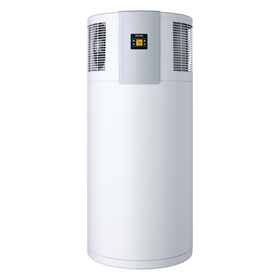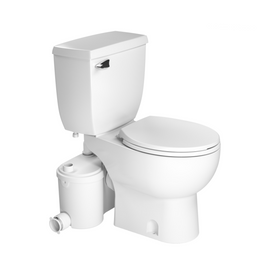
GreenBuild Expo 2018: A Flop for Homeowners
Last Updated: Apr 13, 2025I recently attended the largest conference and expo in the world dedicated to green building: GreenBuild Expo in Chicago, Illinois. Initially launched 25 years ago by the U.S. Green Building Council (the organization that brought us the LEED certification rating systems), GreenBuild Expo has grown exponentially, hosting over 700 exhibitors and attracting about 24,000 attendees (according to 2017 demographics)—a nice mix of architects, engineers, contractors, manufacturers, consultants, facility managers, corporate sustainability directors, students and non-profit professionals—who partake in the green building industry in some way.
For this month’s column, I’m sharing my perception of this mostly inspirational event: highlights and lowlights, and takeaways for homeowners. It should be noted that at any given hour during the November 14-16 conference, there were between 15 and 16 educational sessions happening all at the same time, and the exhibit floor was gigantic—so it’s almost impossible for anyone to give a true synopsis. Here’s mine.
The Opening Plenary
The Opening Plenary featured a rev-up talk from the CEO of the USGBC, Mahesh Ramanujam, and a keynote speech from Amal Clooney, the human rights attorney, and professor who is married to actor George Clooney. Of course, she was fabulous, but what does her work have to do with green building? Not a lot, but she did tie it to the fact that she helps refugees, and indeed our world is producing climate refugees, and those people need our help too. But I was hoping for more; specifically, two things:
- First, from Amal Clooney, who is a true change maker in helping those who have suffered human rights violations. I wanted to hear a recognition—or maybe even an admission—that a human rights attorney may seem like an unlikely choice for a keynote speaker at a green building conference. But there is a connection: her clients’ suffering has stemmed from the abuse of power. And getting more to the root of that connection, what is happening to our planet stems from that very same abuse of power—and people’s health and livelihoods are affected.
- From Mahesh Ramanujam, who spoke excitedly about how all the green building rating systems are growing and transitioning to more to performance-based management of buildings. But I wanted to hear a greater call to action. This is the building community of architects, developers, builders, and engineers—and we were all there because we care about sustainability. We all care about climate change. It is time that this community step up and ensure that every 21st-century building is a fossil fuel-free building. Period. Many educational sessions did address this through a track on “smart energy: creating zero energy buildings, communities, and cities.” In fact, there was one session called “Climate Solutions Now: Zero Energy Industry Leadership.” But the time to call for this was at the Opening Plenary, the largest gathering, and most attentive audience. The aspirational goal I saw in an educational session? “Green buildings for everyone in this generation.” That hardly means anything to most people, as “green” can simply mean that something is made from recycled materials. That is not enough.
The Exhibit Floor
The Exhibit Floor is super fun for someone like me, as it’s got every kind of product and service for buildings, both inside and out, that might make our world just a little more sustainable.
Highlights included the introduction of the “Tiny Home Village”—a tiny little home on a trailer that seemed to have everything one could need, proudly made mostly from a wide variety of plastics. I saw many green roofs and solar companies, every kind of insulation manufacturer, cool water filtration systems for both commercial and residential, and I even picked up a high-quality slinky from a steel manufacturer—the most highly recycled and recyclable metal that contributes greatly to the circular economy.
Table of Contents
- Educational Sessions
- Engagement

The bright spots? Andersen Windows: as a Silver level sponsor of the Expo, Andersen was one of the founding members of the USGBC and also supplies efficient, high-quality windows to homeowners. Interface is another sponsor standout: the maker of FLOR tile for both commercial and residential buildings has one of the best sustainability stories around. Their former CEO, Ray Anderson, read Paul Hawken’s The Ecology of Commerce back in the 1990s, and it transformed him. According to their website, “Interface’s 1994 mid-course correction steered the company away from the typical take-make-waste business model toward one that’s renewable, cyclical, and benign.”
Educational Sessions
The multitude of educational sessions ranges on topics from resiliency, to smart energy management, to healthy building materials, to the panel I moderated on performance benchmarking for under-represented and under-served organizations like schools and churches. Primarily, this is a show for the commercial, not the residential world. Many exhibitors do not even market to homeowners, except for the big corporate sponsors like Home Depot and Kohler. When you see Home Depot, do you think “green” building?
I was surprised to learn that one of the five “journey map” tracks focused on the residential market. But this makes sense: as buildings are responsible for about 39% of greenhouse gas emissions, housing accounts for a significant portion of that.
I attended one session entitled “LEED Residential: The Evolution Towards Higher Performing Homes.” Four different presenters spoke for about fifteen minutes each, touting their company’s LEED-certified homes. It was basically an advertisement. There was no “lessons learned,” nothing shared about challenges or surprises, no real story. Maybe I’m biased: I believe we should share the real story (that’s why I wrote my book, Building a Sustainable Home); that’s how we learn and improve. I walked away thinking, did anyone learn anything in that session?

Engagement
Overall, while many people attend these conferences to pick up continuing education credits for their architecture license or LEED accreditation, it seems the true learning and primary benefit is the engagement with people who work in this field. In just talking to people, I learned about:
- Braindate, an innovative engagement tool (used at many conferences) that allows attendees to pick any topic they are interested in, sign up for a time slot, and wait for other attendees to book a time with you. What are people talking about? The front desk shared with me the major themes: sustainability, female leadership, healthy materials, LEED, and deconstruction.
- The Living Food Challenge, which will be introduced in December by the International Living Futures Institute (ILFI). “The Living Food Challenge will address a food’s cradle-to-plate impacts, including food waste, loss of topsoil, hunger and malnutrition, food miles, overconsumption of meat, advertising to children, monocultures, farmworker rights, factory farming, GMOs, and more. ILFI hopes to learn from and embrace other programs that are also tackling these same challenges to move toward a better future.” Very exciting stuff!
- The Wolf Ridge Environmental Learning Center located in northern Minnesota, which is working with the ILFI to certify its new lodge under the Living Building Challenge. This learning center is teaching the next generation all about sustainability, year-round!
Perhaps the best part for me was the exercise we went through during a session I attended called “Sustainability Roadmap: Leading Organizational Change,” led by Barbra Batshalom of the Sustainable Performance Institute and Nadav Malin of Building Green. The 100+ attendees were told to make two lists in separate columns: what is happening around sustainability currently (in our own organization, client’s organization, etc.), and what we want the future to look like. (I did it for my own home. Current: We recycle, compost, have small solar panel array, ground source heat pump, the large electric bill, small gas bill, no commute to work, LED lights in most places. Future: no fossil fuels, no waste.)
The session also reminded us every action does makes a difference, every voice matters, and that this movement is not going away. In order to achieve success, we need to start with bite-size goals and recognize early wins. We need to ask ourselves: what are our values, how do they align with our actions, and how do we spend our money?
While this session was focused on corporations and organizations, there are powerful takeaways for us as individuals and homeowners. We can recognize where we are on our path towards sustainability—and then dream of aspirational goals of where we want to be. That’s a wonderful first step.
How do we get there? For me, if our gas stove needs replacement, we’ll go electric. If our boiler fails (again), we’ll explore electric heat pumps. When our gas dryer fails, we’ll swap it out to electric. Our next car will be an electric vehicle.
I’m well aware that GreenBuild Expo does not bill itself as the go-to source for sustainable home building and that it will always be more geared toward the commercial side. After all, large commercial buildings and operating businesses can and do have a huge impact on the five primary categories of performance benchmarking: energy, water, transportation, waste, and the human experience.
But these five categories relate to every one of us on an individual level. I believe change begins at home, and GreenBuild Expo is one ripe gathering place for an in-person engagement at the residential level—just as Rise is the place to be for sustainable home improvement online. I’d love to see a more robust residential track next year!
Melissa Rappaport Schifman
Melissa became the Twin Cities’ fifth LEED for Homes Accredited Professional (LEED AP) and completed the work necessary to get her own home LEED Gold Certified, the basis for her book, Building a Sustainable Home: Practical Green Design Choices for Your Health, Wealth, and Soul, (Skyhorse Publishing, August, 2018). With her corporate experience in finance, marketing, and business development, and an MBA and Master’s in Public Policy from the University of Chicago, Melissa has been providing sustainability advisory services to businesses, governmental agencies and non-profits, focusing on strategic and operational change that provide bottom-line financial returns. She has led the LEED certification of two million square feet of commercial buildings, written GRI-compliant Corporate Sustainability Reports, is a LEED Pro Reviewer and LEED mentor with the U.S. Green Building Council. She is the founder of Green Intention LLC where she writes about sustainable home living.











